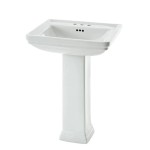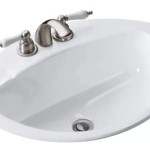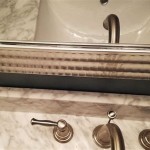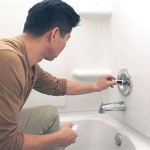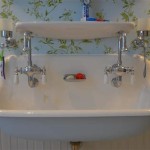Bathroom Exhaust Fan Code Requirements in Ontario
The Ontario Building Code outlines specific requirements for bathroom exhaust fans to ensure adequate ventilation and moisture control. Understanding these regulations is crucial for homeowners, builders, and contractors to maintain healthy indoor air quality and prevent potential structural damage caused by excessive humidity.
The primary purpose of a bathroom exhaust fan is to remove moisture and odors generated during showering and bathing. This moisture, if left unaddressed, can promote mold and mildew growth, leading to health problems and deterioration of building materials such as drywall, paint, and wood. Proper ventilation helps maintain a comfortable and healthy living environment.
The requirements for bathroom exhaust fans in Ontario are primarily found in Division B, Section 9.32 of the Ontario Building Code, which addresses ventilation. These regulations specify the minimum exhaust rate required for bathrooms, as well as the proper installation and venting practices.
Compliance with these code requirements is essential for several reasons. Firstly, it ensures the health and safety of occupants by preventing the accumulation of harmful pollutants and allergens. Secondly, it protects the building structure from moisture damage, which can be costly to repair. Lastly, adherence to the code is a legal requirement, and failure to comply can result in penalties and delays in construction or renovation projects.
Minimum Exhaust Rate Requirements
The Ontario Building Code specifies the minimum required exhaust rate for bathrooms based on whether the ventilation system is designed to operate continuously or intermittently. The exhaust rate is measured in cubic feet per minute (CFM).
For bathrooms with a continuously operating ventilation system, the minimum exhaust rate is 20 CFM. This means that the exhaust fan must be capable of removing at least 20 cubic feet of air per minute, 24 hours a day, 7 days a week. Continuous ventilation is particularly beneficial in homes with high humidity levels or where there are occupants with respiratory sensitivities.
For bathrooms with an intermittently operating ventilation system, the minimum exhaust rate is higher, typically 50 CFM. This is because the system only operates when the bathroom is in use, such as during showering or bathing. The higher exhaust rate is necessary to quickly remove moisture and odors before they can spread to other parts of the house.
The Ontario Building Code also addresses the calculation of exhaust rates for bathrooms of different sizes. In some cases, particularly for larger bathrooms, the required exhaust rate may need to be increased proportionally to the size of the room. Consulting the specific code provisions and seeking professional advice can help ensure that the correct exhaust rate is selected for each bathroom.
The selection of an exhaust fan with the appropriate CFM rating is crucial for compliance with the Ontario Building Code. Factors to consider when choosing an exhaust fan include the size of the bathroom, the typical usage patterns, and the length and complexity of the ductwork. It is always advisable to select an exhaust fan that meets or exceeds the minimum CFM requirements specified in the code.
Proper Installation and Venting
In addition to specifying the minimum exhaust rate, the Ontario Building Code also outlines specific requirements for the installation and venting of bathroom exhaust fans. These requirements are designed to ensure that the exhaust system operates effectively and safely.
One of the key requirements is that the exhaust fan must be vented to the exterior of the building. This means that the exhaust air must be discharged directly to the outside, away from windows, doors, and other air intakes. Venting the exhaust air into an attic, crawl space, or other unconditioned area is prohibited, as this can lead to moisture buildup and mold growth.
The ductwork used to vent the exhaust fan must be made of smooth, non-combustible material, such as metal or rigid plastic. Flexible ductwork is generally discouraged, as it can restrict airflow and reduce the effectiveness of the exhaust fan. The ductwork must also be properly sealed to prevent air leaks.
Insulating the ductwork is often recommended, especially in cold climates, to prevent condensation from forming inside the duct. Condensation can lead to water damage and mold growth, as well as reduced airflow. The insulation should be appropriate for the climate and should be installed according to the manufacturer's instructions.
The termination point of the exhaust duct must be located in a place where the exhaust air can freely disperse without causing problems for neighboring properties. The exhaust vent should be protected by a backdraft damper to prevent outside air from entering the building when the fan is not in operation. The backdraft damper also helps to prevent birds and other animals from nesting in the exhaust duct.
The electrical wiring for the exhaust fan must comply with the Ontario Electrical Safety Code. All electrical work must be performed by a licensed electrician to ensure safety and compliance with the code. The exhaust fan should be connected to a dedicated circuit with the appropriate amperage rating.
Inspection and Compliance
To ensure compliance with the Ontario Building Code, bathroom exhaust fan installations are typically subject to inspection by municipal building officials. These inspections are conducted to verify that the exhaust fan meets the minimum exhaust rate requirements and that it is properly installed and vented.
During an inspection, the building official may check the CFM rating of the exhaust fan, the type and size of the ductwork, the location of the exhaust vent, and the electrical wiring. They may also use a flow meter to measure the actual exhaust rate of the fan.
If the exhaust fan installation does not comply with the code, the building official may issue a notice of non-compliance, requiring the homeowner or contractor to make the necessary corrections. Failure to comply with the notice can result in penalties and delays in the project.
Proper documentation is essential for demonstrating compliance with the Ontario Building Code. This includes the exhaust fan's specifications sheet, the ductwork specifications, and the electrical wiring diagram. Keeping these documents readily available can help facilitate the inspection process.
In addition to municipal inspections, some manufacturers of exhaust fans offer certification programs to verify that their products meet specific performance standards. These certifications can provide added assurance that the exhaust fan will perform as expected and comply with the code requirements.
Homeowners undertaking bathroom renovations or new construction projects are strongly advised to consult with qualified professionals, such as architects, engineers, and contractors, to ensure compliance with the Ontario Building Code. These professionals can provide guidance on selecting the appropriate exhaust fan, designing the ventilation system, and installing the equipment according to the code requirements.
The Ontario Building Code is subject to periodic revisions and updates. Staying informed about the latest code requirements is essential for ensuring compliance and avoiding potential problems. The Ontario Ministry of Municipal Affairs and Housing provides information and resources on the Ontario Building Code, including the latest amendments and interpretations.
By understanding and adhering to the bathroom exhaust fan code requirements in Ontario, homeowners, builders, and contractors can create healthy, comfortable, and durable living environments for themselves and others.

Ontario Imposes Tougher Ventilation Requirements Greenbuildingadvisor

How To Choose The Right Bathroom Exhaust Fan Make It

Bathroom Ventilation In Is An Exhaust Fan Mandatory

Commercial Tf Bathroom Fans Continental Fan

Ontario Imposes Tougher Ventilation Requirements Greenbuildingadvisor

Commercial Tf Bathroom Fans Continental Fan

Venting Of Laundry Room Canadian Home Inspection Services

Ontario Imposes Tougher Ventilation Requirements Greenbuildingadvisor

Gas Meter Clearances

3 Bathroom Exhaust Fan Venting Options Codes
Related Posts
